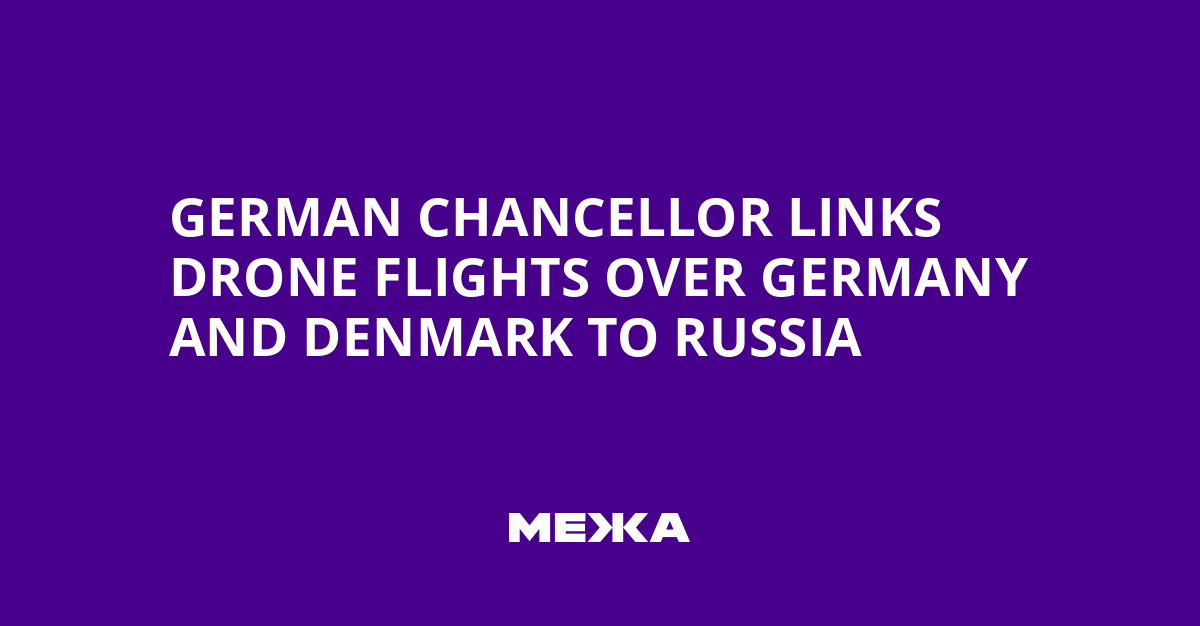German Chancellor Friedrich Merz commented on the appearance of drones over Denmark and German cities, saying that Russia could be behind the majority of such flights. Deutsche Welle cites these conclusions.
“We assume that behind most of these drone flights lies Russia… First of all, I can reassure the public. So far we have had no incident or event involving armed drones… There were only attempts at espionage. And also attempts to alarm the population.”
– Friedrich Merz, Deutsche Welle
According to him, drones are raised by ordinary citizens as well, but doing so near airports is prohibited by law. The recent incident occurred near Germany’s largest airport – Frankfurt am Main Airport.
“We will investigate these cases regardless of who is behind them. It is a serious threat to our security,” the chancellor said.
“This is also a form of hybrid warfare – to make us nervous, to scare us… Therefore we must not show weakness and must not be afraid… We should act wisely, calmly, but also consistently”
– Söder
According to Bavaria’s Prime Minister Markus Söder, the appearance of drones over Munich Airport – the second-largest hub in the country – may also be behind Russia. He admitted that he cannot confirm this exactly.
“This is also a form of hybrid warfare – to make us nervous…” – he also called for quickly creating the legal and practical conditions for intercepting drones and protecting the country from them.
“In Berlin they still haven’t sorted out the ‘streams’, they’re not sure yet who blew them up. The drones will reach us probably in the next century”
– Maria Zakharova
As a reminder, late on October 2 at Munich Airport, flights were restricted, and later completely suspended due to the appearance of drones over the facility. Because of safety restrictions, 17 flights could not depart from Munich, about 3,000 passengers were delayed. Another 15 arriving flights were redirected to Stuttgart, Nuremberg, Vienna, and Frankfurt. On October 3, both runways were closed again.
Drones and aircraft over Europe continue to appear: on the night of September 10 Poland scrambled aircraft to shoot down Russian drones; on September 19 three Russian fighters were in Estonia’s airspace; on September 13 Romania declared an air alert due to threat of attack drones; in the last month unknown drones were spotted over Denmark, Sweden, and Norway; on the night of September 26 several drones were detected over the German state of Schleswig-Holstein.
Context of the events and official responses
The escalation of drone activity by various actors in Europe’s skies is driving tighter airspace controls and operational measures to intercept threats. The German government and regional leaders emphasize the importance of rapid response and coordination between agencies to ensure citizens’ safety and the stability of airspace.
Experts generally note that such incidents are viewed as part of hybrid warfare, where informational and psychological components go hand in hand with real security risks. Meanwhile, official statements urge not to panic and to follow the established airspace rules.
All sides should prepare for potential checks and strengthening countermeasures against threats: from technical equipment to legislative solutions that will enable rapid responses to new challenges in Europe’s airspace security.
